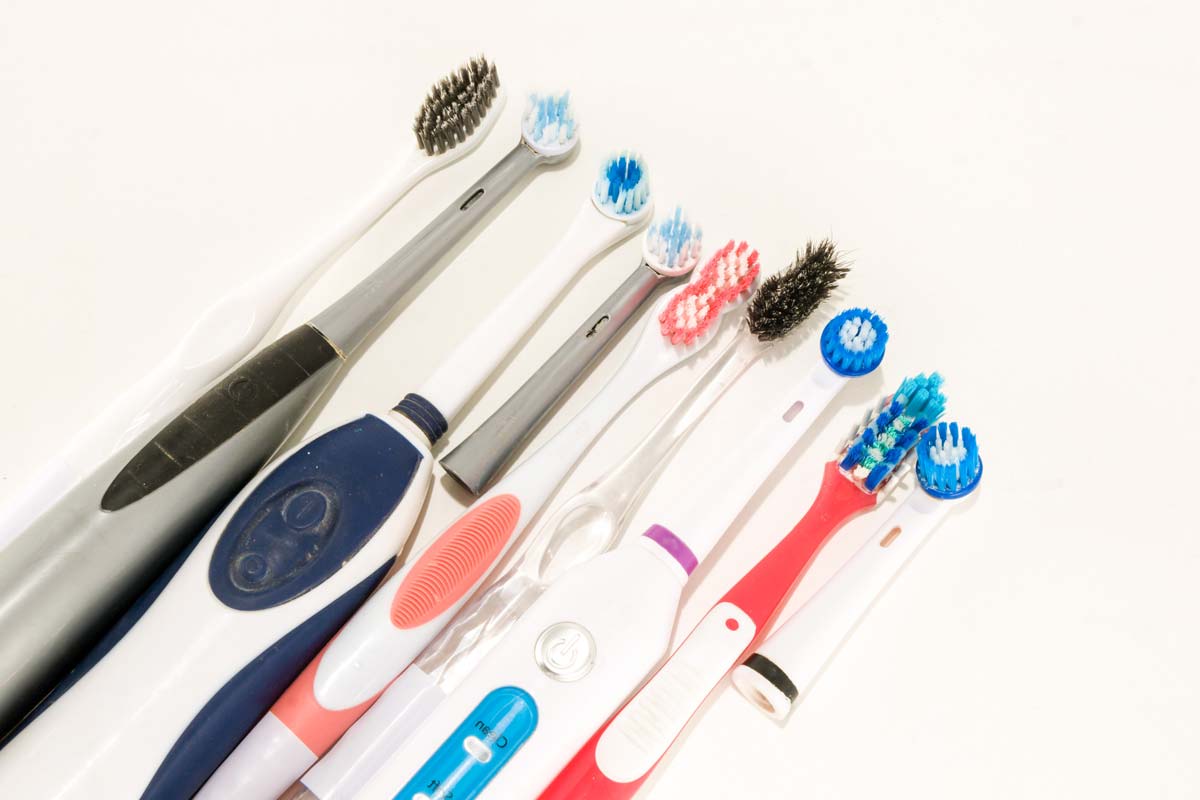You rely on your toothbrush to polish your smile and keep cavities at bay. Brushing twice a day and even after meals is an important part of good oral hygiene. However, you may not be aware of how many choices there are for the size, shape, and texture of your favorite dental tool. At Lovett Dental Katy, we have a biased affinity for all types of toothbrushes, and we’d be glad to discuss which ones can help keep your smile radiant.
Types of Toothbrushes: How to Choose
Between electric and manual types of toothbrushes, there are so many choices it can leave you dizzy. Learn about each kind, and remember to change your toothbrush every three months to ensure that you’re cleaning your teeth as effectively as possible.
The next time you need a new toothbrush, consider whether to buy a manual or automatic one and whether you want a hard, soft, or medium bristle. Your dentist can help you decide which toothbrush is right for you.
Hardness
If you find a toothbrush that you like, make sure to check the hardness of the bristles before purchasing it. Avoid hard toothbrushes that can injure or irritate your gums. Most people choose a soft toothbrush due to its gentle cleaning ability. This is particularly important if your gums are soft.
When you come into Lovett Dental Katy, our dental professionals can recommend the right hardness level for your teeth. If we notice corrosion on your tooth enamel, we will recommend an extra soft toothbrush.
Medium brushes work for people with average or above-average dental health. However, for the best results, you should follow your dentist’s recommendation.
We only recommend harder toothbrushes if you have an unusual buildup of plaque. Harder toothbrushes may do a better job of removing stubborn plaque. The disadvantages of hard toothbrushes outweigh any advantages, however. Talk to your dental professional when you come in for a cleaning or checkup if you believe a harder toothbrush does a better job on your teeth.
While fluoride treatment and other dental care can help build up your enamel, proper care begins with home maintenance.
Toothbrush Shapes
The types of toothbrushes by shape vary widely and include diamond, round, and conventional. A diamond-shaped head may help you reach small spaces between teeth, but you should use the shape that feels comfortable so that you can brush for the full two minutes.
Top of Bristle Shape
The tops of your toothbrush’s bristles determine how well it can access crevices and gaps. Generally, choose a shape that gives you confidence that you are removing plaque and debris while brushing. Many individuals prefer wavy or unique shapes that can properly clean molars and other unusually shaped teeth.
Handle Type
You are likely familiar with the slender handles of traditional manual toothbrushes, but other types of toothbrushes have unique handles. From flat to angled, the shape of the handle should provide a good grip to avoid having to fish your toothbrush out of a germy sink. Choosing an ergonomic or textured handle helps your keep a firm grip on the toothbrush. Handle type might be an especially important consideration for children or individuals who have difficulty with fine motor skills.
Comprehensive Tooth Care in Katy, TX
Lovett Dental Katy offers a full range of general and specialty dental services to help you keep your teeth and gums healthy. If you need guidance in making any decisions affecting your oral health, feel free to ask us on your next visit. We will be glad to discuss the best types of toothbrushes for you. Call us at 832-437-6477 today to make an appointment.







